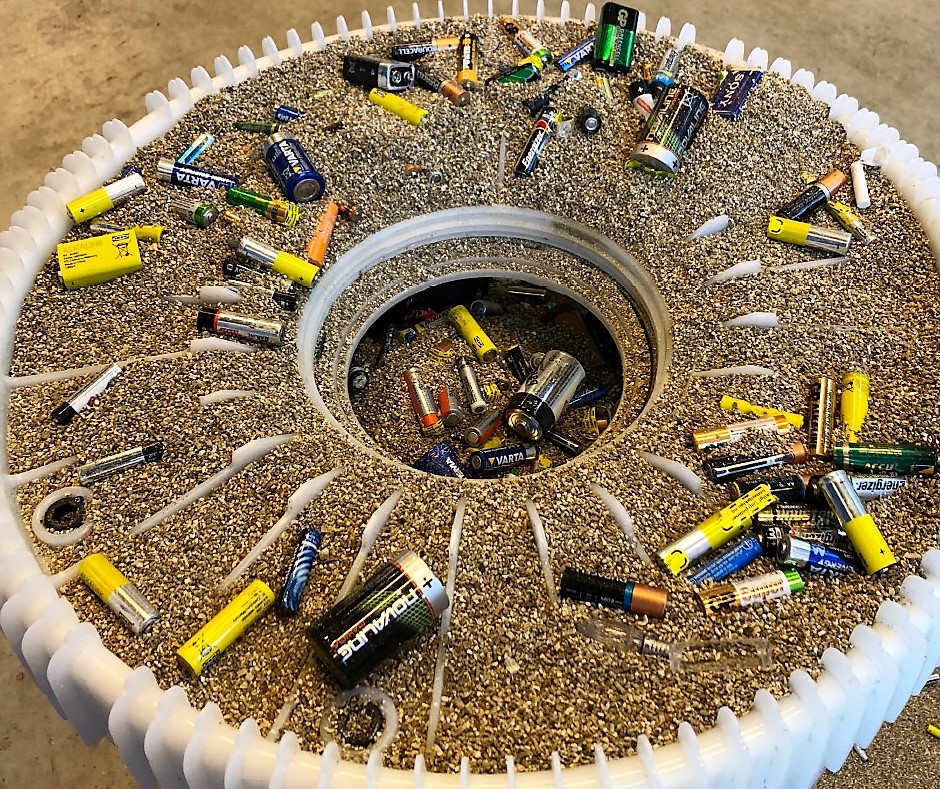There has been a steady stream of reported fires and explosions since lithium batteries were introduced in the 1970s. According to Sintef, lithium batteries are the most flammable battery in the market. We surround ourselves all the time with the risky battery. It is widely used in laptops, mobiles and similar electronics, in addition 120 000 electric cars with lithium batteries run around Norwegian roads. Lithium batteries have become significantly safer since it was introduced in the 1970s, but due to the huge increase in use, reported fires have not decreased. How do we minimize the risk of self-ignition when handling lithium batteries?
To illustrate the problem, we can look at the electric car. It contains 700 kilograms of lithium batteries. If the electric car explodes, there will be a heat development of 1100-1200 degrees, which can have major consequences if it is located on, for example, a ferry, in a garage or under a hotel.
Why do we use lithium batteries?
The advantages of lithium batteries are that they have stable discharge voltage, good storage properties and good load properties even at low temperatures. In Norway, the Armed Forces have been one of the largest users of the batterie, because of the unique characteristics in the cold. It is less harmful to the environment to use rechargeable batteries such as lithium batteries, because it requires less resources and creates less waste. They can deliver large amounts of electricity and are based on a relatively environmentally friendly technology. It is therefore of great interest to find a proper way to handle lithium batteries.
Batteries convert chemical energy directly into electrical energy, and consist of one or more galvanic elements or cells, with a specific cell voltage. Lithium batteries are a group of primary batteries, and are characterized by the fact that they have lithium as anode material. Due to the light weight of the metal lithium and a normal potential of 3.05 volts, the lithium battery has higher cell voltage and energy density than other primary batteries. The transformation of chemical energy into electrical energy in a primary battery takes place by a non-reversible process. With a gas-tight seal, lithium batteries should not be dangerous as long as it is used and handled according to manufacturer specifications.
High risk
To ensure that pollutants do not go astray and minimize risk, it is important to sort and recover all types of batteries. If a fire occurs, it can lead to intensive smoke development and gas emissions, and it can cause damage to the respiratory tract. One risk factor specifically for lithium batteries is that they can come into contact with other waste that causes it to short-circuit and create sparks. Lithium batteries have a significantly higher specific energy compared to other types of batteries. They can emit flammable gases and catch fire if they are short-circuited, which can occur even when the battery is discharged. They must therefore be treated carefully and handled appropriately. Transport of lithium batteries is subject to dangerous goods regulations.
To minimize the risk of self-ignition, a very special expertise and handling of the batteries is required.
These are some of the measures that can be taken to minimize the risk of self-ignition:
· Clear labelling of batteries with an over-crossed waste container.
· Tape over both poles of used batteries.
· Hand in all types of batteries. Sellers of batteries accept used batteries of the same type as they sell.
· Municipal environmental stations and hazardous waste reception also accept batteries.
· Manufacturers and importers are responsible for collecting discarded batteries.
· The return companies Batteriretur and Norsirk are responsible for sending discarded batteries to the correct treatment plant.
· Avoid causing physical damage in the event of a collision. This can lead to leakage, heat development, smoke, fire or explosion. If the battery has been damaged, it can release electrolyte and it is important to isolate to avoid the risk of this occurring.
· When storing and handling lithium batteries, place dry sand such as lime powder (CaCO3) or vermiculite layered between the batteries. This is done to isolate and has an absorbent effect.
· Make sure that the batteries are stored dry, avoid large temperature fluctuations, and do not store batteries at a temperature of more than 50 ° C.
· If a fire occurs, it is extinguished with water, which will prevent the fire from spreading further.
· Areas that have been in contact with liquid from batteries should be rinsed.
· It is recommended to wear protective gloves, protective clothing, protective mask, respirator when handling damaged lithium batteries.
· Do not allow batteries to come into contact with other waste and especially metal, as this increases the risk of short circuits.

Storage of lithium batteries
Plastic provides a lower risk of short-circuiting than metal, so it is recommended to store lithium batteries in plastic containers. Mezonic has developed containers in 100% plastic, and they do not contain any metal parts. The CC Container is robust and is designed to meet the UN performance testing criteria for Packing Group II – medium fare. It lowers the risk of self-ignition and is very suitable for safe handling of lithium batteries.
Please contact us to hear more about the CC container.
Sources
· https://www.ffi.no/no/Rapporter/10-00215.pdf
· http://batteriretur.no/generell-informasjon/
· https://www.miljostatus.no/tema/kjemikalier/produkter/batterier/
· http://www.sinusmagasinet.no/artikler/2017/august/litiumbatterier_

Lithium batteries that burn do not go out with water. Li-ion battery that "burns" forms its own o2, and can therefore burn underwater. Water cools down, but the reaction can easily flare up. Extinguishing agent I know works is f-500.